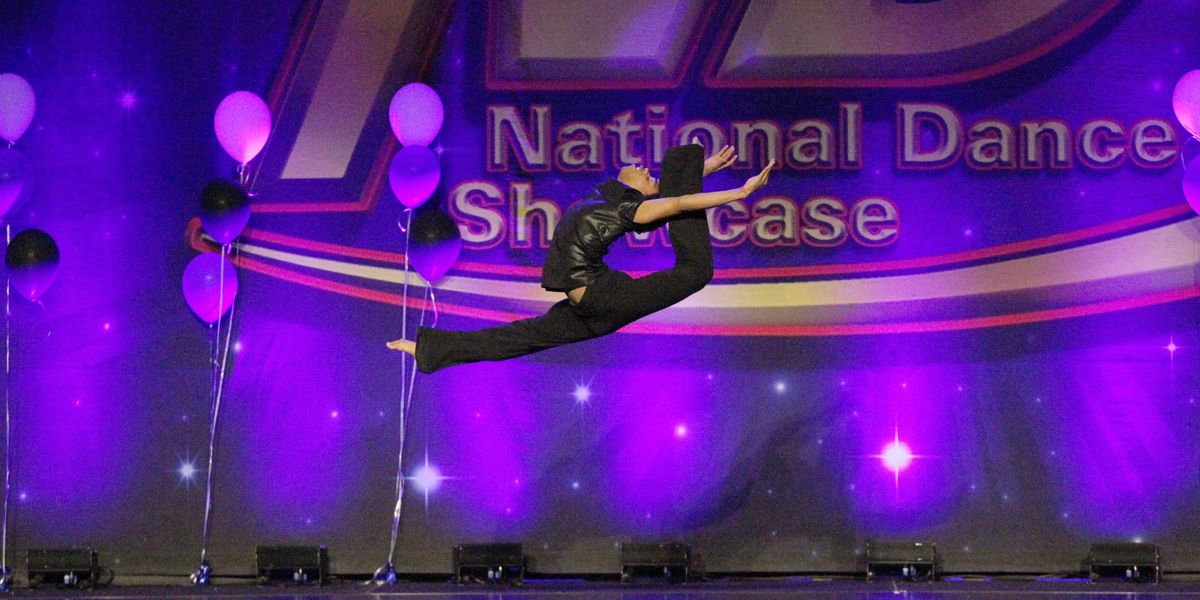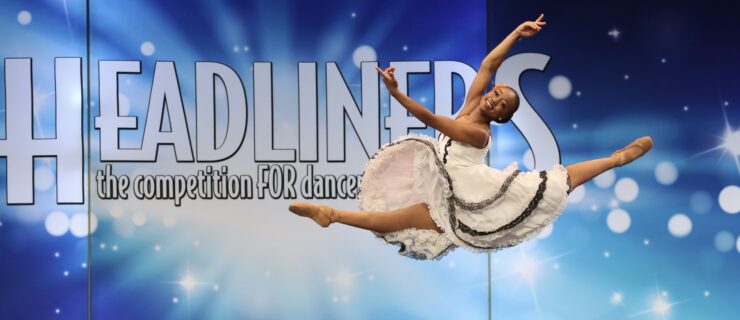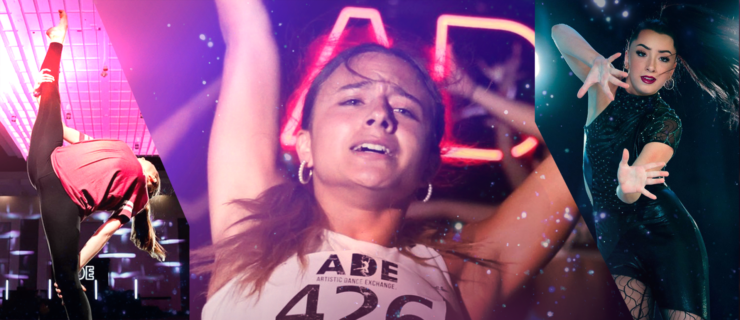National Dance Showcase Judges Discuss Diversity in the Competition World—and How NDS is Pushing For a More Inclusive Future
As conversations about racial justice have continued across the country, members of the dance world have focused inwards and reflected on how we can all do better. The close-knit competition and convention community is no different. Dance Spirit had the chance to talk to five judges from National Dance Showcase, as well as one of its founders, Sonia Pennington, about issues they’ve seen in the comp world—and hear all about how NDS is leading the way to a more inclusive future.
Dance Spirit: What problems relating to issues of diversity and inclusion have you seen in the competition world?
Elizabeth Troxler, NDS judge:
There’s this idea that dancers must be “technically perfect” to win awards. But when you watch people dancing professionally, you look at the dancer as a whole. We need to do that in the competition world too. We need to be able to say, “I can appreciate you, even if your foot doesn’t stretch all the way, because you’re bringing such a presence to the movement.” The idea that being able to do a triple pirouette is the only thing that makes a good dancer is a lie. It’s kind of important, but not really.
Jay Staten, NDS judge:
I think that the competition world is built in a way that doesn’t necessarily reflect what the dance world really is. You thrive in the competition world by spending more money, so if you don’t spend as much, you lose out.
Many competitions judge with similar point criteria, where technique has the heaviest weight in your score. But to have technique, you have to spend money. Musicality, on the other hand, can be natural to a dancer. But someone who doesn’t have technique, even if they have musicality, won’t win against a super technical performer. I think that’s an issue.
Vanessa Baker, NDS judge:
It may sound superficial, but it’s important to me—costuming. For the longest time, I had to spray-paint costumes, or have dancers dance bare-legged and barefoot. It can be very obvious when there are costumes that have illusions or cutouts and there’s a “flesh color” fabric, but that “flesh color” isn’t right for all dancers. It can make dancers feel very isolated.
JS:
In the same vein of costuming, I will often feel offended by how studios choose to depict dances from different genres. Like, it’s a hip-hop dance, and suddenly all the white dancers are wearing cornrows. Or, it’s ballet, and they’re doing the Chinese dance from The Nutcracker, and suddenly all of the dancers have chopsticks in their hair. Sometimes I will have to say, “I can’t judge this, because this is offensive.”
DS : How do you think National Dance Showcase has cultivated a more inclusive culture?

(Brian Bailey, Courtesy National Dance Showcase)
Sonia Pennington, NDS co-founder:
It’s just who we are; how NDS was formed. I think because of my Blackness, inclusivity became an inherent part of the organization. We are a tapestry of “difference,” and incorporating a multitude of perspectives leads to inclusion. It also gives voice and sight to those that aren’t always seen or heard.
JS:
NDS makes their programs accessible. And if you want to include everyone, it needs to be accessible. If you’re promoting the culture of dancers flying from state to state, from entry to entry, it clearly is not accessible. So, it depends on what you’re here for. If you’re here to make money, that’s one thing. If you’re here to create an inclusive community, that’s another thing.
Christopher Jackson, NDS judge:
Accommodation is the other part of it. NDS is accessible and accommodating. A lot of competitions are set in their ways—your piece is three minutes long, you stop at three minutes, and if you go over, you get deducted. NDS realizes that at the end of the day, we’re not taking out livers and kidneys. It’s a dance competition. We’re trying to have a good time.
Sue McCarrol, NDS judge:
I think NDS does a really good job of keeping perspective. By keeping that perspective, they put a lot of effort into making sure everyone feels recognized. Not in a way where it feels like, “Oh, we tossed this award out to you so everyone feels recognized.” But in a real way, a carefully thought about way.
CJ:
One of the things I love most that NDS does is the “Backstage Award,” which celebrates those dancers who are respectful to other students in dressing rooms, who are respectful to the staff. To me, that award is a big deal, because it’s important for students to know that it’s not just about how you act onstage, but it’s how you act backstage—that’s what keeps the job, in the real world.
SP:
One of the biggest things we are interested in investing in is representation. Especially when you’re trying to be inclusive and diverse, representation is key, so that as a dancer of color, you’re going into a competition and seeing judges that look like you.
DS : What do you think it means to dancers of color, to see themselves represented on a judging panel?
JS:
It changes their dancing from being something that they like to something that they can spend their life doing. It’s completely life changing. I’m from Washington, DC, so all my teachers were Black. But if I hadn’t had Black teachers, I probably wouldn’t be on this Zoom call right now, because I wouldn’t have seen myself in dance. It’s the difference between thinking you can walk on water, and knowing you can walk on water, because you saw someone else do it.
ET:
On the panel, we honor each other. We learn from each other. I love that we have the opportunity to represent that to younger generations. Because if we, the judges, are having a great time together and honoring each other’s work, they see that they can do that within their own communities. I’m honored to be a part of that.
DS : What advice would you give dancers who don’t feel well represented or who feel isolated in the competition and convention world?
VB:
Keep going. You have to keep going. You may be the only one, but you can be a trailblazer. And you won’t be the only one for very long.
JS:
You have to do the research. Just like you’re going to look for the company that makes gluten-free cookies, you have to look for the competition that has judges of color. Dance is cultural. And I know at NDS, there will be at least one person who understands what I’m trying to do. I don’t think judges are really thinking “You’re Black; no points for you.” I just think that some things don’t translate well if you’re from different cultural backgrounds.
Be selective. Dance so strongly affects your psyche, because you have people commenting on what you look like. And you don’t want to give everybody that power.
CJ
: You have to use the space for what it is. Competitions are performance spaces, really. In your studio, you probably get to perform twice a year—once at the Christmas show and once at the recital in June. But competitions are performance opportunities. If you look at it like that and not just as a trophy, you’re getting the best out of it.
SM
: Remember that it’s just one person’s opinion in one moment in time in one place in the world. Look inside yourself and see how you feel about what you put onstage.
DS: Do you have any advice for other competitions working to become more inclusive?

SP:
You said it—make changes. In this day and age, to have a staff that looks exactly the same is unacceptable. You cannot say that you are open to inclusion and diversity if you have no representation. And I don’t mean you get the token hip-hop judge, or the token tap judge. You find professional ballerinas of color. You find professional modern dancers of color. You show the gamut of what is out there.
Underrepresentation is a problem because you’re not giving young dancers the ability to look out and see themselves in 10 years, or 15 years, or 20 years. As a leader of a competition, I think it’s so important for the dancers to know that the world is so much bigger than what they look like. You are able to conquer any dream, aspiration, or goal no matter what, especially if you know that you are embraced, supported, accepted and “seen”! As a community of professional artists investing in the next generation that is so beautifully diverse, we must be committed to setting the example for the world to follow.




